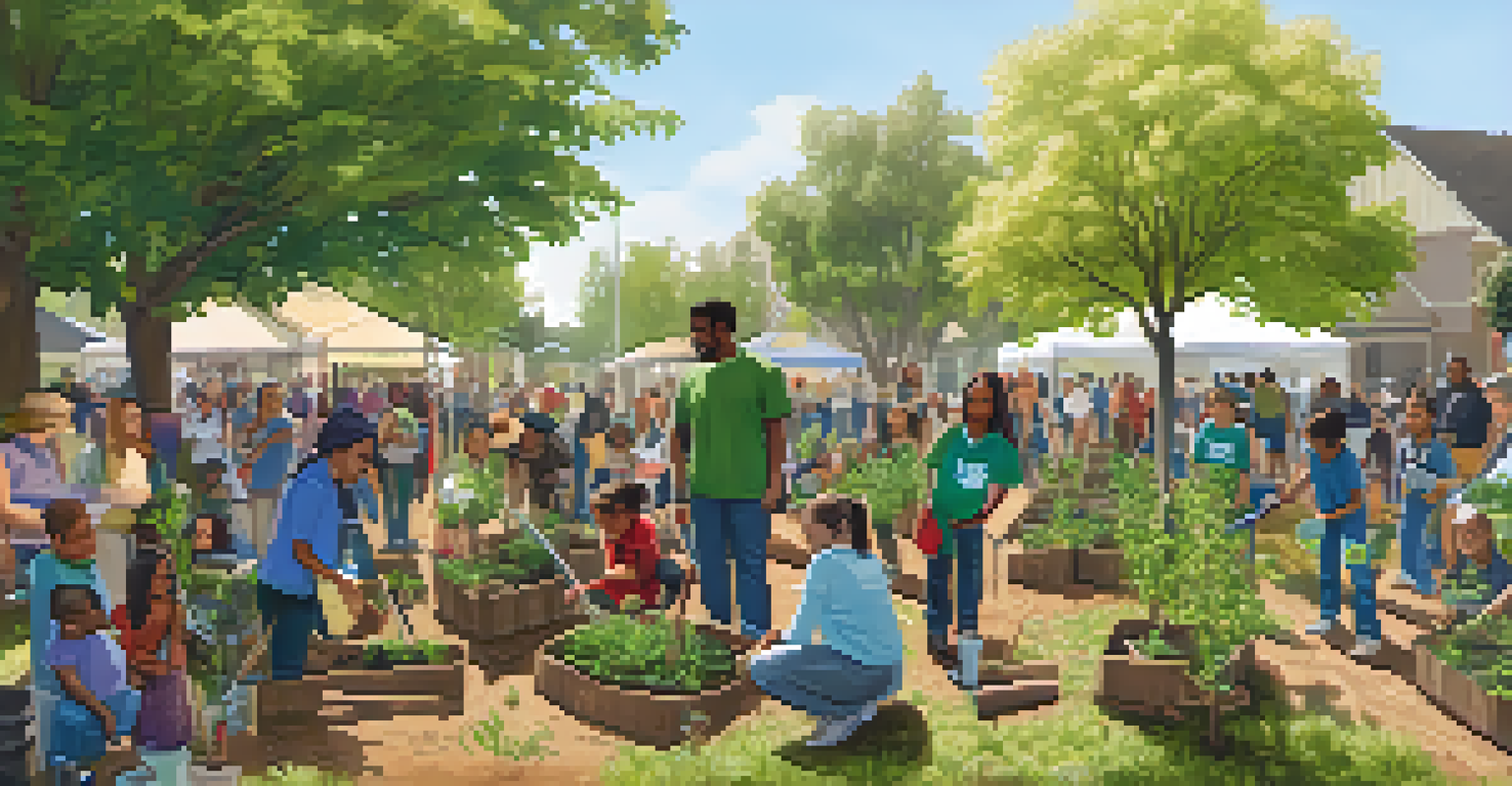The Role of Urban Trees in Sacramento’s Air Quality

Understanding Sacramento's Air Quality Challenges
Sacramento, known for its sunny weather, often faces air quality challenges due to pollutants and seasonal smog. This is particularly problematic during the summer months when high temperatures exacerbate the situation. Urban development, vehicle emissions, and industrial activities contribute to this growing concern, prompting the need for effective solutions.
The best time to plant a tree was twenty years ago. The second best time is now.
The region's air quality is measured using the Air Quality Index (AQI), which reflects levels of harmful particles and gases in the atmosphere. Unfortunately, Sacramento frequently sees spikes in the AQI, making it essential to explore strategies for improvement. Among these strategies, the role of urban trees emerges as a vital player in enhancing air quality.
By understanding the specific challenges faced in Sacramento, we can better appreciate the significant role trees play in mitigating these issues. Their presence not only beautifies the city but also offers practical solutions to combat air pollution.
The Role of Trees in Filtering Air Pollution
Urban trees act as natural air filters, absorbing pollutants like carbon dioxide, sulfur dioxide, and nitrogen oxides through their leaves. This process is known as phytoremediation and is crucial in urban environments where pollution levels are often higher. Each tree can absorb significant amounts of these harmful gases, effectively improving air quality.

Moreover, trees release oxygen through photosynthesis, contributing to a healthier atmosphere. This oxygen production is vital, especially in densely populated areas where air quality can suffer. The more trees we plant, the more oxygen we have, creating a cycle that benefits both the environment and public health.
Trees Improve Sacramento's Air Quality
Urban trees play a critical role in filtering pollutants and producing oxygen, significantly enhancing air quality in Sacramento.
In Sacramento, the combination of trees’ capabilities to filter pollutants and produce oxygen plays a pivotal role in combatting the effects of urbanization. By increasing urban greenery, we can significantly enhance the city's air quality.
Urban Trees and Temperature Regulation
Trees not only clean the air but also help regulate temperatures in urban areas, creating a cooler environment. In Sacramento, where summer temperatures can soar, the shade provided by trees is invaluable. This cooling effect can lower the demand for air conditioning, which in turn reduces energy consumption and associated emissions.
The clearest way into the Universe is through a forest wilderness.
The phenomenon known as the 'urban heat island effect' describes how cities tend to be warmer than surrounding areas due to human activities and infrastructure. Urban trees help mitigate this effect, providing essential shade and evaporative cooling. By strategically planting trees in urban landscapes, we can create pockets of cooler air that offer relief from the heat.
As Sacramento continues to grow, the importance of trees in temperature regulation becomes increasingly evident. Their dual role in cooling the environment and improving air quality underscores the necessity of maintaining and expanding urban forestry initiatives.
The Importance of Biodiversity in Urban Areas
Urban biodiversity refers to the variety of plant and animal life within city environments. Trees contribute significantly to this biodiversity, providing habitats and food sources for various species. This not only enriches the ecosystem but also enhances the overall quality of life for city residents.
In Sacramento, a diverse tree canopy supports birds, insects, and other wildlife, promoting a balanced ecosystem. These species play essential roles in pollination and pest control, further benefiting urban environments. By fostering biodiversity, we create a more resilient city that can better withstand environmental challenges.
Community Engagement is Key
Local tree planting initiatives foster community involvement and awareness, encouraging residents to contribute to urban greening efforts.
The connection between biodiversity and air quality is evident as well. A healthy urban ecosystem can filter pollutants more efficiently, making the city more livable. Thus, protecting and planting diverse tree species contributes to both ecological health and improved air quality.
Community Engagement and Tree Planting Initiatives
Community involvement is crucial in enhancing Sacramento's urban tree canopy. Local organizations and city initiatives often host tree planting events, encouraging residents to participate in greening their neighborhoods. These initiatives not only beautify the area but also foster a sense of community and pride.
Engaging the community in tree planting efforts also raises awareness about the importance of urban forestry. Educational programs can inform residents about the benefits of trees, from improving air quality to providing shade. By empowering individuals to take action, we can cultivate a culture of stewardship toward our urban forests.
Such collaborative efforts underscore the collective responsibility we share in maintaining a healthy environment. As Sacramento residents come together to plant trees, they simultaneously work toward improving air quality and enhancing their community's well-being.
The Economic Benefits of Urban Trees
Beyond their environmental benefits, urban trees also offer significant economic advantages. Properties with mature trees tend to have higher market values, attracting potential buyers and increasing overall neighborhood appeal. This can lead to a more vibrant local economy, as well-maintained areas encourage business growth.
Additionally, trees can help reduce city spending on energy costs and stormwater management. By providing shade, they lower energy consumption for air conditioning, while their root systems help absorb rainwater, reducing flooding and drainage costs. These savings can be redirected toward other community needs, showcasing how trees are a wise investment.
Economic Benefits of Urban Trees
Mature trees increase property values and reduce municipal costs, demonstrating their economic importance in urban areas like Sacramento.
Ultimately, the economic benefits of urban trees extend beyond mere aesthetics. Their ability to enhance property values and reduce municipal costs reinforces the argument for increased urban forestry efforts in Sacramento.
Future Steps for Enhancing Sacramento's Tree Canopy
Looking ahead, Sacramento can take proactive steps to enhance its urban tree canopy. This includes developing comprehensive urban forestry plans that prioritize tree planting and maintenance. By establishing clear goals and strategies, the city can effectively increase its tree cover and, in turn, improve air quality.
Collaboration between city officials, environmental organizations, and community members will be key to these efforts. Engaging diverse stakeholders ensures that the needs of all residents are considered, promoting equitable access to green spaces. This collaborative approach can foster a stronger commitment to urban forestry initiatives.

As Sacramento envisions a greener future, the role of urban trees in enhancing air quality and overall livability cannot be overstated. By investing in trees today, we are investing in a healthier and more vibrant community for generations to come.